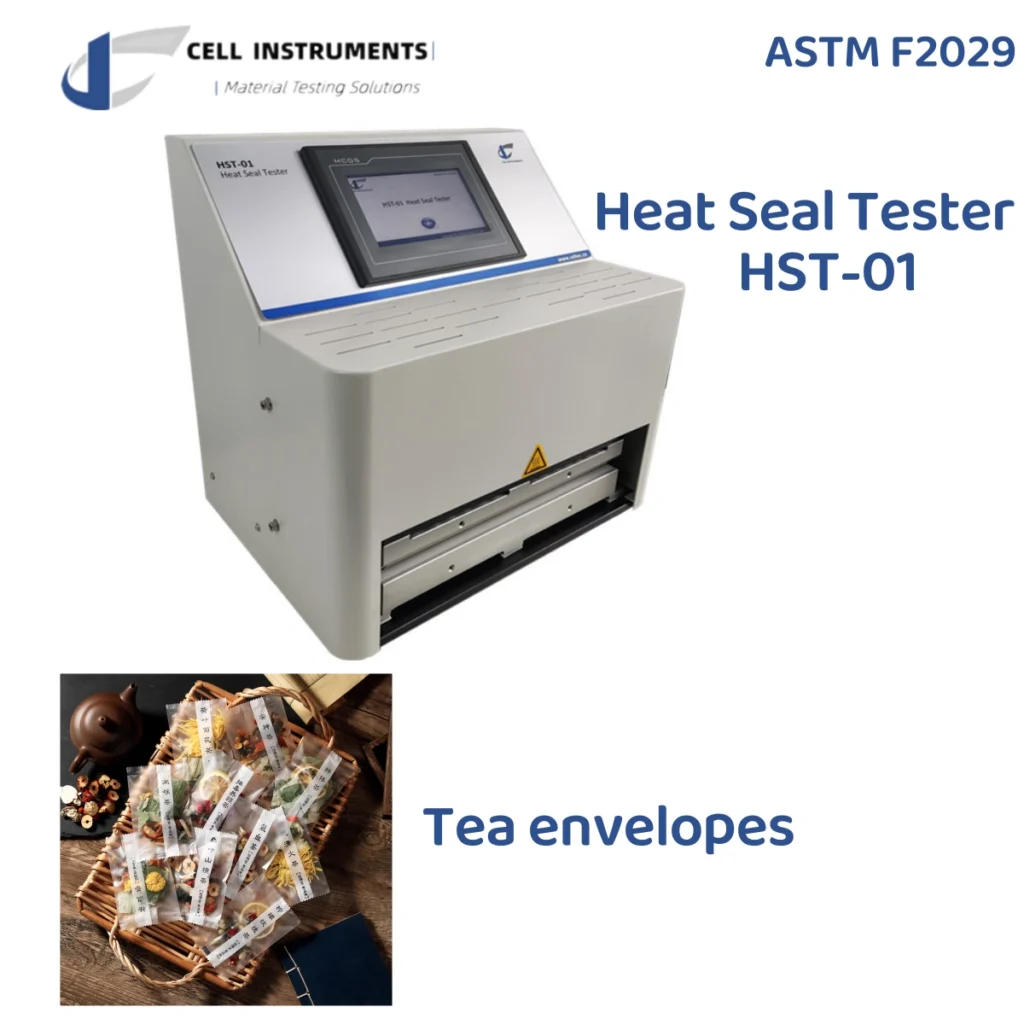Tea envelopes Testing
In the packaging industry, especially for products like tea, the integrity of the packaging seal is crucial for ensuring freshness and quality. One key test used to assess the reliability of these seals is the heat seal integrity test, particularly according to ASTM F2029. This standard provides practices for determining the heat seal strength of flexible barrier materials, such as tea envelopes, which is vital for both manufacturers and quality control teams. This article will guide you through the essentials of performing heat seal integrity testing for tea envelopes and the standards to follow.
What is Heat Seal Integrity Testing?
Heat seal integrity testing involves evaluating the strength and durability of a heat seal, ensuring that it can withstand the conditions it will face in real-world applications. For tea envelopes, the seal integrity plays a direct role in product preservation, protecting the contents from external elements like moisture and air. Using ASTM F2029, manufacturers can simulate real-world conditions in a controlled environment to determine how well their tea envelope seals perform.
Importance of Heat Seal Integrity in Tea Envelopes
Tea is a sensitive product that requires protection from moisture, oxygen, and other environmental factors. Packaging that fails to maintain its integrity can lead to contamination, loss of freshness, and degradation of quality. Thus, heat seal integrity is a critical factor in tea packaging. Seals that are too weak may fail during handling or transportation, causing the tea to spoil or the packaging to break open. By adhering to ASTM F2029, tea manufacturers ensure that their packaging performs as expected throughout the supply chain.
Overview of ASTM F2029
The ASTM F2029 standard provides specific guidelines for testing the heat sealability of flexible barrier materials. These practices help determine how changes in material properties, like thickness and construction, affect the heat seal strength. It is important to note that the heat seal process in a laboratory environment may differ from large-scale manufacturing equipment, but the data obtained serves as a useful baseline for optimizing sealing conditions in production.
- ASTM F2029 emphasizes the following critical elements:
- Sealing Temperature: It should be adjusted based on the material being tested.
- Dwell Time: The duration of heat application affects the seal strength.
- Pressure: The sealing pressure should be optimized to achieve the best seal strength without causing damage to the envelope material.
- Calibration and Alignment: Proper calibration of the heat sealer ensures accurate results.
Step-by-Step Guide to Heat Seal Integrity Testing
- Test Specimen Preparation
- To ensure reliable results, it is essential to use properly prepared test specimens. For tea envelopes, mark the machine or transverse direction of the sample and orient the specimens consistently to minimize variability in test results
- Setting up the Heat Sealer
- Ensure that the heat sealer is properly calibrated and that the jaws are aligned parallelly. Set the appropriate sealing temperature, pressure, and dwell time according to the materials being used.
- Conducting the Test
- Perform the test by sealing the tea envelope at the set conditions and then testing the seal strength using Test Method F88. The seal’s failure mode—whether it’s a clean peel, rupture, or another type of failure—can provide valuable insights into its performance.

- Recording the Data
- Document all the relevant data, including sealing conditions (temperature, pressure, and dwell time), material properties, and seal strength. This data should be analyzed to identify any weaknesses in the sealing process and to improve future production runs.
Recommendations for Tea Envelope Heat Seal Testing
For accurate and consistent results, using the right equipment is crucial. The Cell Instruments Heat Seal Tester Model HST-01 is an excellent choice for performing heat seal integrity testing on tea envelopes. The HST-01 is designed to provide precise control over sealing conditions, ensuring reliable data for optimizing seal strength.
Key Features of the HST-01 Heat Seal Tester:
- Accurate Temperature Control: Allows for precise sealing conditions that align with the ASTM F2029 requirements.
- Pressure Adjustment: Customizable sealing pressure to simulate different manufacturing environments.
- Ease of Use: User-friendly interface, making it suitable for both small labs and large production facilities.
Conclusion
Tea envelope heat seal integrity testing is a fundamental process to ensure the quality and reliability of tea packaging. By adhering to ASTM F2029, manufacturers can effectively assess and improve the seal strength of their packaging materials, ensuring that their products reach consumers in optimal condition. Implementing reliable testing methods, such as those provided by Cell Instruments Heat Seal Tester Model HST-01, can enhance the overall efficiency and performance of your sealing process.
Frequently Asked Questions (FAQ)
What is heat seal integrity testing, and why is it important for tea envelopes?
Heat seal integrity testing evaluates the strength of the seal on tea envelopes to ensure the product remains fresh and protected during transportation and storage.How does ASTM F2029 contribute to heat seal testing?
ASTM F2029 provides guidelines for assessing heat sealability, including temperature, dwell time, and pressure, ensuring that the seal strength is adequate for real-world conditions.What are the best practices for performing heat seal tests?
Proper specimen preparation, consistent sealing conditions, and accurate data recording are essential for effective heat seal testing.Can the HST-01 Heat Seal Tester be used for other packaging materials?
Yes, the HST-01 is versatile and can be used for testing a wide range of flexible barrier materials, not just tea envelopes.What is the impact of incorrect sealing pressure on tea envelopes?
Insufficient or excessive sealing pressure can lead to weak seals, causing failure during handling, transportation, or storage, potentially compromising the product’s freshness.
